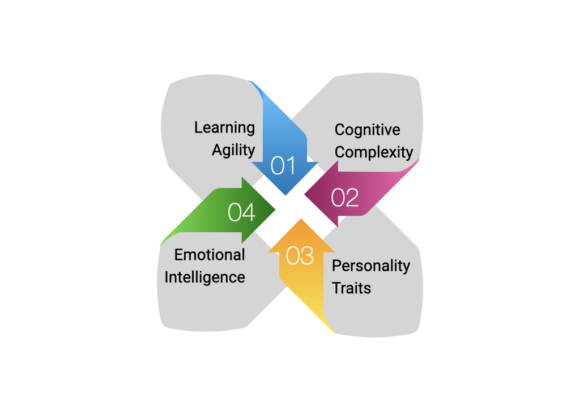To understand a leader’s potential, there are many ways. There are targeted dimensions, leadership competencies, and corresponding assessment methods and tools. A holistic approach to assessment makes it meaningful, rather than one single assessment. An approach involving a battery of tests and multiple information sources works best.
-
Learning agility
Ability to adapt to changing business conditions and respond accordingly
-
Cognitive complexity/capacity
Ability to view situations from multiple perspectives enables leaders to tolerate and navigate through complexity, ambiguity, conflict, and chaos
-
Emotional intelligence
The ability to create a positive work environment based on trust, allows for the achievement of strong business results
-
Personality traits
Leaders with these personality traits tend to be successful: persuasive, competitive, dedicated to a goal, resilient, visionary

Assessment Methods:
As much as what gets evaluated is important, how it is done, is too. Here are some tools we have found
effective in our work:
-
Structured Interviews
Cognitive ability, tacit knowledge, job knowledge, etc.
-
Unstructured Interviews
Social skills and personality, cognitive complexity, etc.
-
Work samples and simulations
Measure specific job skills/knowledge and more general skills, including organizational, analytical, and interpersonal skills
-
Assessment centers
Incorporate a variety of assessment tools, including personality and emotional behavioral interviews, and work samples and simulations
-
Individual assessments
Include psychological measures and unstructured interviews, focusing on the candidate as a whole rather than on individual abilities or traits
In all, what a leader brings to the table defines how the Organisation grows.

